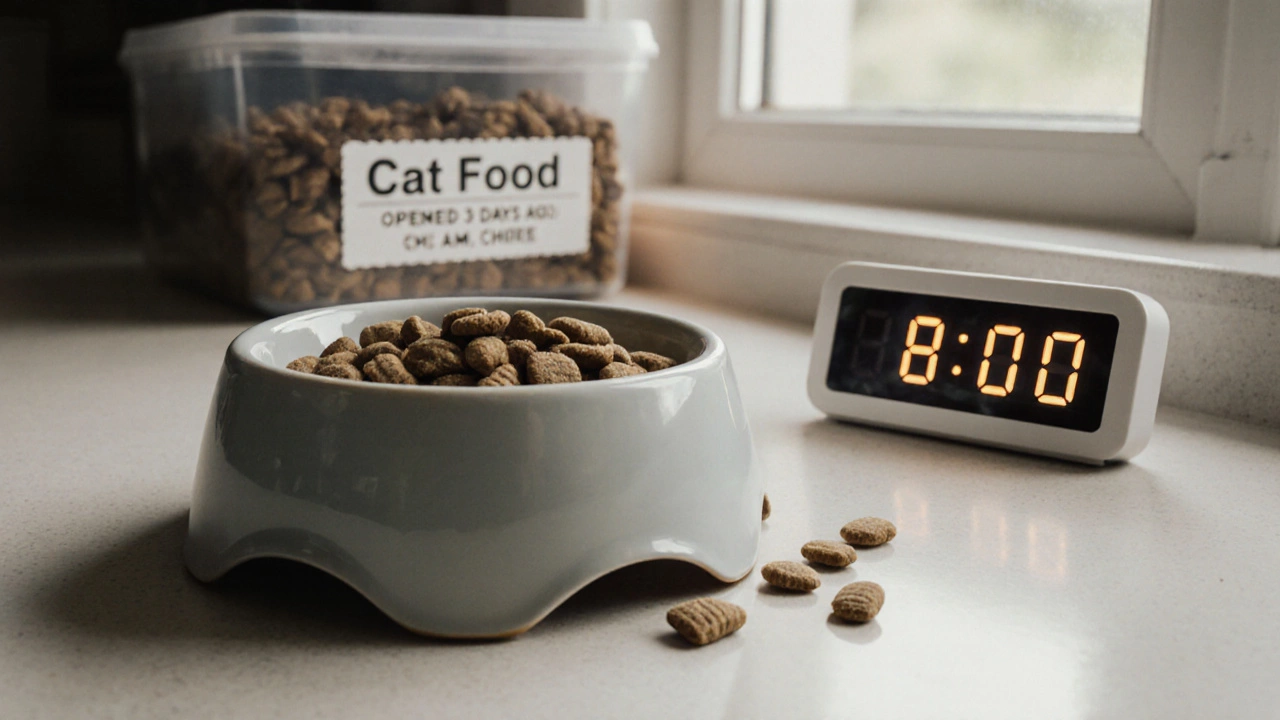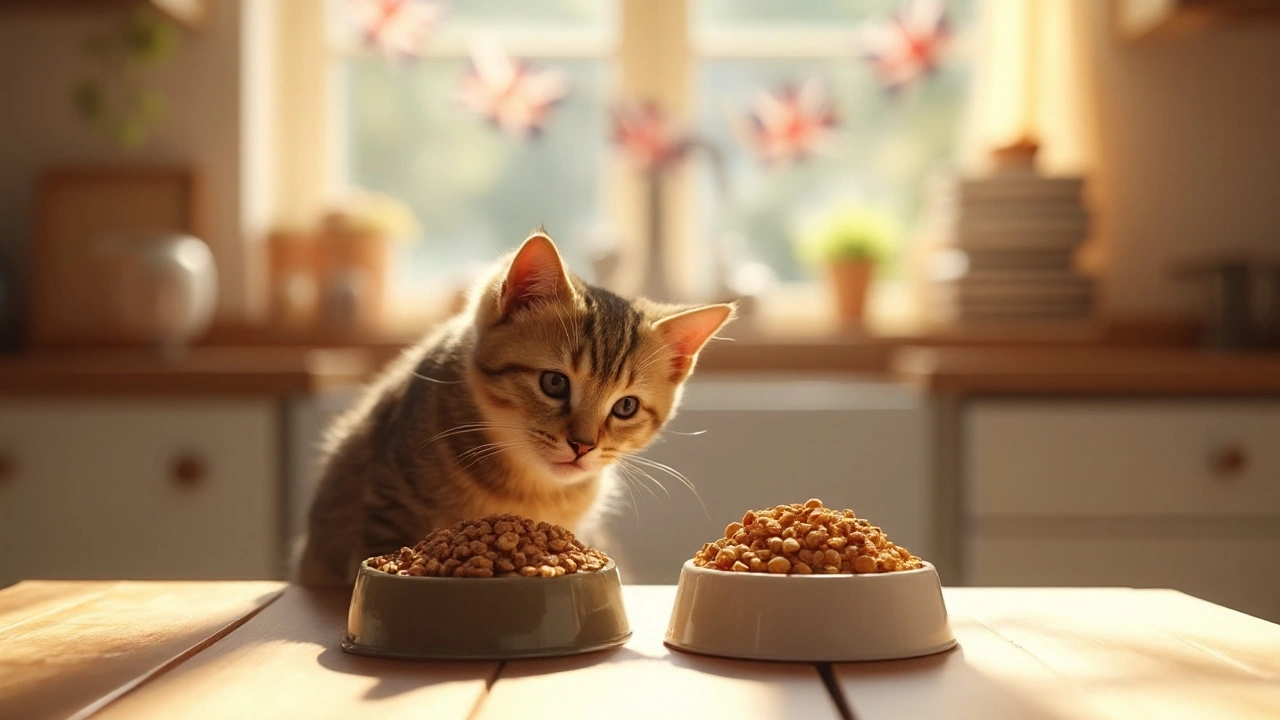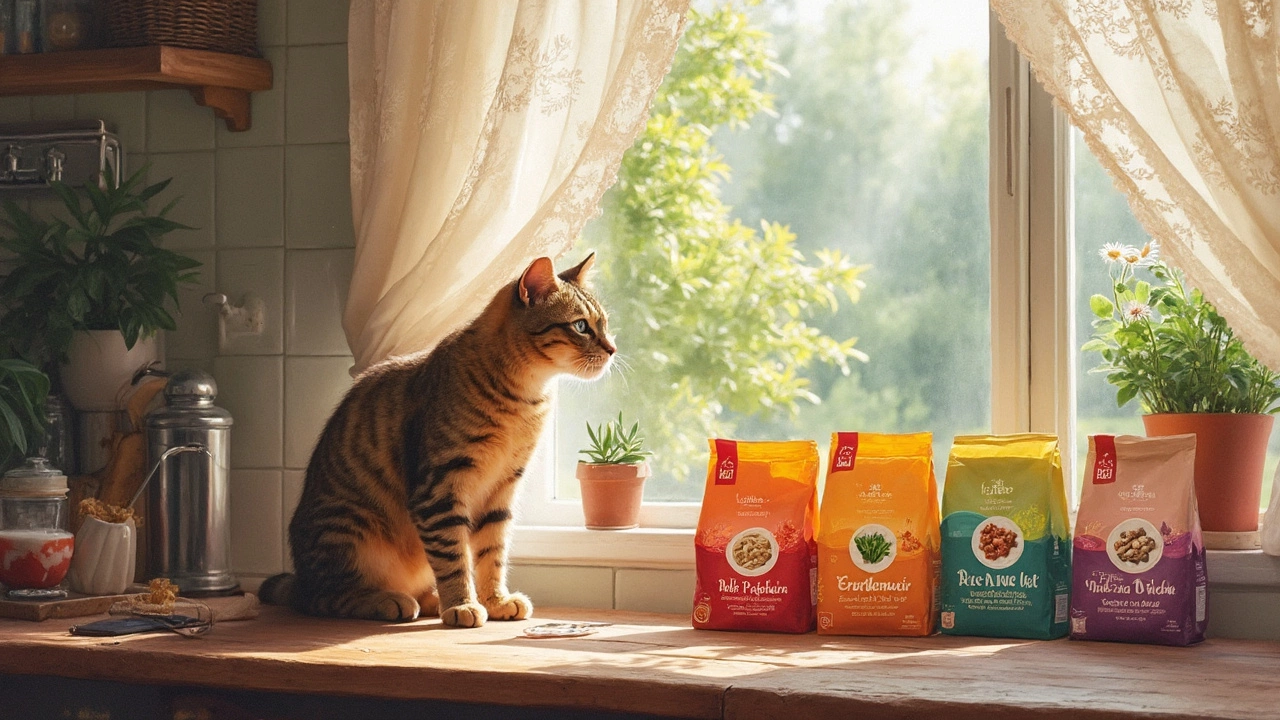Dry Cat Food: Simple Guide to Choosing the Best Kibble for Your Cat
Dry cat food is the go‑to option for many owners because it stores well, is easy to portion, and can help keep teeth clean. But not all kibble is created equal. Picking the right bag can boost your cat’s energy, coat shine, and overall health.
What to Look for in Dry Cat Food
First, check the protein source. Real meat—chicken, turkey, fish, or beef—should be the first ingredient. Cats are obligate carnivores, so they need high‑quality animal protein to thrive.
Second, watch the carbohydrate level. Many cheap brands load kibble with corn or wheat, which cats don’t need in large amounts. Look for grain‑free or low‑grain formulas that list peas, lentils, or sweet potato as secondary carbs.
Third, mind the additives. Taurine, an essential amino acid, must be present; without it, cats can develop heart problems. Vitamin E, omega‑3 fatty acids, and antioxidants are also good signs of a balanced diet.Finally, consider the calorie count. Indoor cats burn fewer calories than outdoor hunters, so a lower‑calorie kibble helps prevent weight gain.
Feeding Tips and Common Mistakes
Measure each serving. A common mistake is “free feeding” where the bowl is always full—this makes it hard to track intake and leads to obesity. Use the feeding guide on the bag as a starting point, then adjust for your cat’s age, activity level, and body condition.
Keep the food fresh. Store kibble in an airtight container away from heat and moisture. Stale food loses flavor and can develop mold, which isn’t good for any pet.
Introduce new kibble slowly. Mix a small amount of the new brand with the old one, gradually increasing the new portion over a week. This reduces digestive upset and helps your cat get used to the new taste.
Watch for signs of trouble. If your cat’s stools become soft, they’re losing weight, or they seem less playful, the kibble might not suit them. Switch to a different formula with higher moisture or different protein sources.
Don’t forget water. Dry food contains very little moisture, so always provide fresh water. Some cats love a cat‑friendly water fountain, which encourages them to drink more and helps avoid urinary issues.
Finally, pair dry kibble with occasional wet meals or a water‑rich broth. This adds variety, boosts hydration, and keeps picky eaters interested.
Choosing the right dry cat food doesn’t have to be confusing. Focus on high‑quality animal protein, low unnecessary carbs, essential nutrients like taurine, and proper portion control. With these basics, you’ll give your cat a tasty, nutritious diet that supports a shiny coat, bright eyes, and plenty of playful energy.

Should You Leave Dry Cat Food Out All Day? Here's What Vet Experts Say
Leaving dry cat food out all day may seem convenient, but it can spoil quickly, attract pests, and lead to weight gain. Vet experts recommend scheduled meals for better health and freshness.
View more
Wet vs Dry Cat Food: Which Is Better for Your Cat’s Health?
Comparing wet and dry cat food: explore nutrition, hydration, dental health, convenience, and cost to pick the best choice for your cat's well-being.
View more
Top 5 Best Dry Cat Food Brands for Happy, Healthy Cats
Picking the right dry cat food can seriously impact your cat’s health and mood, but with countless options on the shelves, it's tricky knowing which ones stand out. This article breaks down the five best dry cat foods that really deliver on both nutrition and taste, using insights from cat owners and experts. Expect tips on ingredients to look for, common red flags, and what actually matters for your cat’s day-to-day wellbeing. You’ll get a straight talk on which brands rise above the rest and why. Perfect for any cat owner wanting to make a smart, informed decision.
View more
Can My Cat Thrive on Dry Food Alone?
Many cat owners wonder whether their feline companions can live healthily on dry food alone. While dry food is popular for its convenience and cost-effectiveness, it's important to consider how it impacts a cat's overall health. This article explores the nutritional needs of cats, the benefits and drawbacks of dry food, and how to make sure your cat's diet is balanced. Learn practical tips to ensure your furry friend stays happy and healthy.
View more